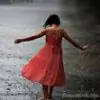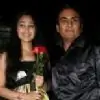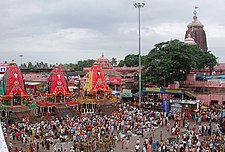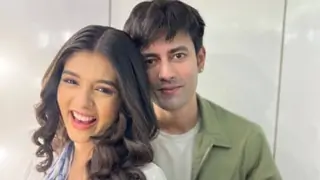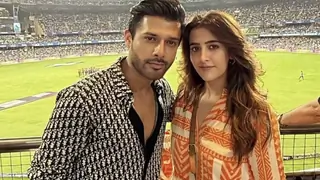kadachit kalandi Tatobipinoh Sangeeta KArabo
MudaBhiri Nari Vadana Kamala Swada MAdhoopah
Rama Shambhu Brahma Sura Pati Ganeshayarchita Pada
Jagannatha Swami Nayana Patha Gami Bhava Tume
Yes its Rath Yatra Today😊😊
10th July 2013
Puri Ratha Yatra / Car Festival
'RATHA JATRA' or me 'Car Festival', the most important festival of Lord Jagannath commences on the 10 July, Wednesday and Return Car Festival ur' Bahuda Jatra' on 18 July this year. This colourful festival which draws millions of devotees from various parts of the country as well as from abroad to Puri, is held in June-July every year. Lord Jagannath, Lord of the Universe, comes out of His sanctum sanctorum to give Darshan to all Devotees belonging to all sects and communities.lt is said that those who take part in the Car Festival earn their passage to the Heaven.
'Snana Pumima' marks the beginning of this festival. On this day the three deities - Lord Jagannath, Lord Balabhadra and Devi Subhadra take prolonged bath on an open platform known as 'Snana Bedi', Then they retire for 15 days popularly called the period of 'Anabasara' and remain in isolation. During this period, no public worship is performed. After 15 days of isolation, the Gods come out of the temple in a colourful procession to board their respective Chariots and thereafter begins the journey known as "Ratha Jatra'.
SnanPurnima
The much famous Temple Chariot Festival of Lord Jagannath, takes place in Puri. On the first day, the Jagannath temple images are carried through the street in three huge thundering chariots which have made this event internationally known. Nine days later, the journey is repeated in the opposite direction. To witness this festival is an experience of a life time, but ensure to book rooms and make all other arrangements well in advance.
Each year, in monsoon season, the proxy images of Jagannath, Balabhadra and Subhadra--the deities enshrined in the Jagannath Temple at Puri--are carried in colorful processions every evening for 21 days to the Narendra Tank where they cruise in a bright decorated boat.
In gaiety and color, this festival stands next only to the Car Festival. On the full noon day of Jyestha (June), the Sananjatra or the bathing festival is observed when the images in worship are actually brought out for public viewing.
After the bathing festival, the deities spend 15 days in seclusion during which period they are repainted and prepared for the Car Festival. The Car Festival is celebrated on the second day of the bright fortnight of Ashadha (June-July) and the deities are taken on a journey of around 3 kms in stupendous and decorated chariots for sojourn in the Gundicha Ghar till the return Car Festival which is held 9 days later.
The chariot of Lord Jagannath, known as 'Nandighose', is 23 cubits high and has 18 wheels. The chariot of Balabhadra, which is 22 cubits in height and has 16 wheels, is named 'Taladwaja'. 'Devadalan' the chariot of Subhadra, is 21 cubits in height and has 14 wheels.
The chariots are made anew every year in accordance with strict and ancient specifications and are pulled by several thousand devotees at a time. In terms of splendor and fervent devotion, the Car Festival is one of the world's most incredible spectacles.
Wiki Info
Rath Yatra at Puri

The Jagannath triad are usually worshiped in the sanctum of the temple at Puri, but once during the month of Asadha (Rainy Season of Orissa, usually falling in month of June or July), they are brought out onto the Bada Danda (main street of Puri) and travel (3 km) to the Shri Gundicha Temple, in huge chariots (ratha), allowing the public to have darsana (Holy view). This festival is known as Rath Yatra, meaning the journey (yatra) of the chariots (ratha). The Rathas are huge wheeled wooden structures, which are built anew every year and are pulled by the devotees. The chariot for Jagannath is approximately 45 feet high and 35 feet square and takes about 2 months to construct . The artists and painters of Puri decorate the cars and paint flower petals and other designs on the wheels, the wood-carved charioteer and horses, and the inverted lotuses on the wall behind the throne . The huge chariots of Jagannath pulled during Rath Yatra is the etymological origin of the English word Juggernaut.The Ratha-Yatra is also termed as the Shri Gundicha yatra.

The most significant ritual associated with the Ratha-Yatra is the chhera pahara." During the festival, the Gajapati King wears the outfit of a sweeper and sweeps all around the deities and chariots in the Chera Pahara (sweeping with water) ritual. The Gajapati King cleanses the road before the chariots with a gold-handled broom and sprinkles sandalwood water and powder with utmost devotion. As per the custom, although the Gajapati King has been considered the most exalted person in the Kalingan kingdom, he still renders the menial service to Jagannath. This ritual signified that under the lordship of Jagannath, there is no distinction between the powerful sovereign Gajapati King and the most humble devotee.
Chera pahara is held on two days, on the first day of the Ratha Yatra, when the deities are taken to garden house at Mausi Maa Temple and again on the last day of the festival, when the deities are ceremoniously brought back to the Shri Mandir.
As per another ritual, when the deities are taken out from the Shri Mandir to the Chariots in Pahandi vijay, disgruntled devotees hold a right to offer kicks, slaps and the derogatory remarks to the images, and Jagannath behaves like a commoner.
In the Ratha Yatra, the three deities are taken from the Jagannath Temple in the chariots to the Gundicha Temple, where they stay for seven days. Thereafter, the deities again ride the chariots back to Shri Mandir in bahuda yatra. On the way back, the three chariots halt at the Mausi Maa Temple and the deities are offered Poda Pitha, a kind of baked cake which are generally consumed by the poor sections only.
The observance of the Rath Yatra of Jagannath dates back to the period of the Puranas. Vivid descriptions of this festival are found in Brahma Purana, Padma Purana, and Skanda Purana. Kapila Samhita also refers to Rath Yatra. In Moghul period also, King Ramsingh of Jaipur, Rajasthan has been described as organizing the Rath Yatra in the 18th Century. In Orissa, Kings of Mayurbhanj and Parlakhemundi were organizing the Rath Yatra, though the most grand festival in terms of scale and popularity takes place at Puri.
Moreover, Starza notes that the ruling Ganga dynasty instituted the Rath Yatra at the completion of the great temple around 1150 AD. This festival was one of those Hindu festivals that was reported to the Western world very early. Friar Odoric of Pordenone visited India in 1316-1318, some 20 years after Marco Polo had dictated the account of his travels while in a Genovese prison In his own account of 1321, Odoric reported how the people put the "idols" on chariots, and the King and Queen and all the people drew them from the "church" with song and music.
International Jagannath Rath Yatra


The Ratha Yatra festival has become a common sight in most major cities of the world since 1968 through the ISKCON Hare Krishna movement. Its leader A.C Bhaktivedanta Swami Prabhupada successfully transplanted the festival which now happens on an annual basis in places all over the world in over 100 cities including Dublin, Belfast, Birmingham, London, Bath, Budapest, Melbourne, Montreal, Paris, New York, Singapore, Toronto, Antwerp, Kuala Lumpur and Venice, CA Mexico
Dhamrai Jagannath Roth festival
Dhamrai Jagannath Roth is a chariot temple, a Roth, dedicated to the Hindu God Jagannath located in Dhamrai, Bangladesh. The annual Jagannath Roth Jatra is a famous Hindu festival attracting thousands of people. The Roth Jatra in Dhamrai is one of the most important events for the Hindu community of Bangladesh.The original historical Roth was burnt down by the Pakistan Army in 1971 The Roth has since been rebuilt with Indian assistance.
Rathjatra of Mahesh
The Rathajatra of Mahesh is the second oldest chariot festival in India (after Rath Yatra at Puri) and oldest in Bengal, having been celebrated since 1397. It is a week-long festival held in Mahesh in Hooghly district of West Bengal and a grand fair is held at that time. People throng to have a share in pulling the long ropes (Roshi) attached to the chariots of Lord Jagannath, Balarama and Subhadra on the journey from the temple to Serampur Gundicha Bari and back.


